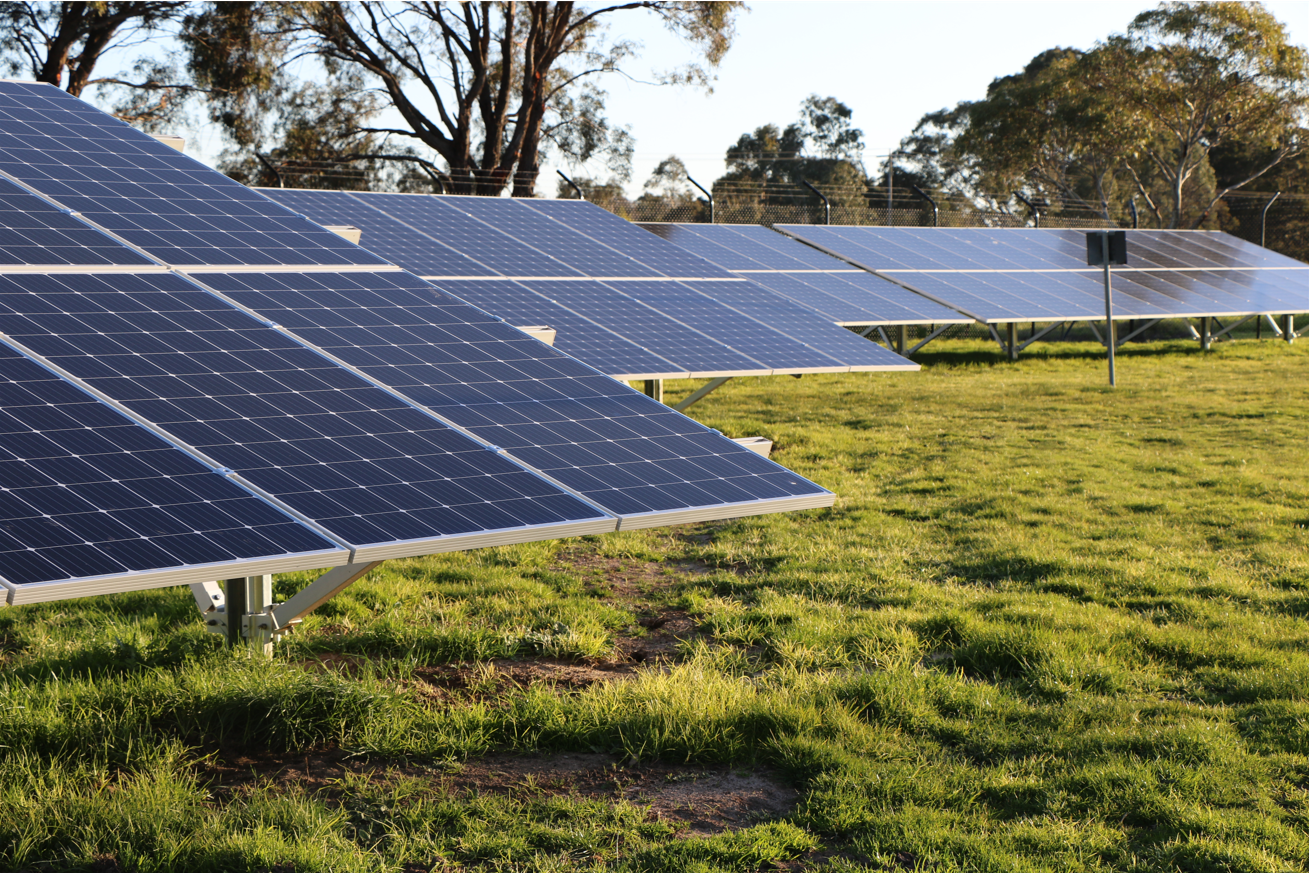By PHILIP HOPKINS
A GORMANDALE man has lost his appeal against the proposed five-megawatt Flynn solar farm, and now fears his property will lose value due to his new neighbour – and he has no avenue for a further appeal.
The solar farm being developed by BNRG Leeson on a 16-hectare parcel of land at Gormandale has received a permit to go ahead from the Minister for Planning, Sonya Kilkenny, but Paul Tabone, who lives at 1482 Hyland Highway next to the solar site, said in his objection that the project “impacts my property and my way of life”.
“The solar farm will inhibit my view from my house as I sit above the solar farm. The panels will be 250-300 metres from my house,” he said.
Mr Tabone said when he bought his house in 2003, the view was amazing, looking out at the farm land and mountain ranges.
“There were no houses in close proximity and with amazing view this was the reason why I purchased my property. My property has been a haven for me and my family,” he said.
“I frequently sit out under the verandah and look out at the amazing view, to de-stress and relax. With the proposed solar farm, I will be looking down at the solar panels and battery, which will be an eyesore. There has been a proposal for a barrier so I don’t see the panels, but now I will be looking at the barrier and not my extended full view.”
Mr Tabone said the value of his property would fall due to the solar farm. Two real estate agents confirmed his property would be devalued and harder to sell in the future.
“The view and surrounding farmland has been the No 1 selling point for my property. Also, who wants to live next door to a solar farm so close to your house!” he said.
Mr Tabone said the proposed battery for the project was close to his property and a potential hazard.
“I have a safety concern. If the battery catches fire, will my family be at risk?” he said.
Another reason for his objection was the noise and traffic during construction and the ongoing maintenance of the solar farm.
“As my house is higher than the proposed solar farm, I have found that noise travels uphill very easily. With the increase noise and traffic, this will impact my peace and quiet at my property,” he said.
BNRG Leeson is a joint venture between an Irish solar company and an Australian renewables developer.
The project includes a 10 megawatt-hour battery and will plug into existing powerlines across the Highland Hwy.
An executive in the Department of Transport and Planning, in a letter to Mr Tabone, said the assessment of the Flynn project included issues raised by Mr Tabone.
The permit included conditions requiring an updated landscape and visual impact assessment to reduce the visual impacts of the solar farm.
The conditions also require a risk management plan and emergency plan meeting CFA guidelines. Permit conditions also regulate noise compliance.
BNRG’s project manager, Annabel Young, said the five MW solar farm consisted of about 10,000 solar panels which would take up about 13 hectares of the 16ha land.
“This is due to fire breaks around the site as well as leaving sufficient space to allow for paddocking of sheep underneath the panels,” she said.
To shield the views from the neighbouring property, Ms Young said BNRG had had the visual impact modelled by an independent consultant and had offered landscape screening so that the location would minimise any impact.
Queried how ‘de-glaring’ reduced the glare of the solar panels, the company said photovoltaic panels are designed to absorb sunlight and convert it to electricity.
“Minimising the light reflected from the panels is a goal of panel design, manufacture, and installation. The dark, non-reflective nature of a solar array is generally considered to help minimise their visual contrast with the surrounding landscape,” Ms Young said.
“Because our project has trackers, the panels will follow the sun ensuring the panel surfaces remain mostly perpendicular to the angle of the sun. Therefore, glare or glint impacts on surrounding areas is unlikely. We have independently assessed all roads and dwellings within a one kilometre radius and confirmed that there will be no glare. The site is almost entirely screened from the road as well to prevent distraction from road users.”
The battery is likely to be a two-hour, 10 MWh battery.
“The battery will be used to absorb some of the solar energy so that the energy can be discharged to the grid during peak demand times in the evening and morning. The battery also will be able to provide a back up power supply in outages, as well as voltage and frequency support to the network,” Ms Young said.
On the issue of fire-fighting, Ms Young said the site had been designed and would operate in compliance with the CFA’s Design Guidelines and Model Requirements for Renewable Energy Facilities.
“The guidelines require things such as maintained fire breaks around the facility and large water storage tanks. The permit has been reviewed and endorsed by the CFA,” she said.
The spokeswoman emphasised that the company had undertaken multiple community engagement activities to engage with the neighbours and community as well as to listen to their concerns. This included a drop-in session, print advertising and letter drops.
The company estimates that up to 50 people would be on site during construction.
“Ongoing jobs will be 5-10 jobs depending on the maintenance program,” she said.
Construction time mainly depends on the grid permit “for which we are working with AusNet to obtain”, Ms Young said.
“We anticipate to commence construction at the end of the year. Construction will take six-to-eight months.”











